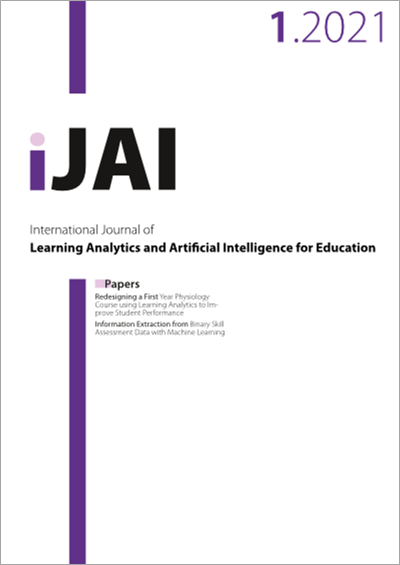Information Extraction from Binary Skill Assessment Data with Machine Learning
DOI:
https://doi.org/10.3991/ijai.v3i1.24295Keywords:
Data mining, Clustering, Non-negative matrix factorization, Strength training skill test, Binary dataAbstract
Strength training exercises are essential for rehabilitation, improving our health as well as in sports. For optimal and safe training, educators and trainers in the industry should comprehend exercise form or technique. Currently, there is a lack of tools measuring in-depth skills of strength training experts. In this study, we investigate how data mining methods can be used to identify novel and useful skill patterns from a binary multiple choice questionnaire test designed to measure the knowledge level of strength training experts. A skill test assessing exercise technique expertise and comprehension was answered by 507 fitness professionals with varying backgrounds. A triangulated approach of clustering and non-negative matrix factorization (NMF) was used to discover skill patterns among participants and patterns in test questions. Four distinct participant subgroups were identified in data with clustering and further question patterns with NMF. The results can be used to, for example, identify missing skills and knowledge in participants and subgroups of participants and form general and personalized or background specific guidelines for future education. In addition, the test can be optimized based on, for example, if some questions can be answered correct even without the required skill or if they seem to be measuring overlapping skills. Finally, this approach can be utilized with other multiple choice test data in future educational research.
Downloads
Published
How to Cite
Issue
Section
License
The submitting author warrants that the submission is original and that she/he is the author of the submission together with the named co-authors; to the extend the submission incorporates text passages, figures, data or other material from the work of others, the submitting author has obtained any necessary permission.
Articles in this journal are published under the Creative Commons Attribution Licence (CC-BY What does this mean?). This is to get more legal certainty about what readers can do with published articles, and thus a wider dissemination and archiving, which in turn makes publishing with this journal more valuable for you, the authors.
By submitting an article the author grants to this journal the non-exclusive right to publish it. The author retains the copyright and the publishing rights for his article without any restrictions.


